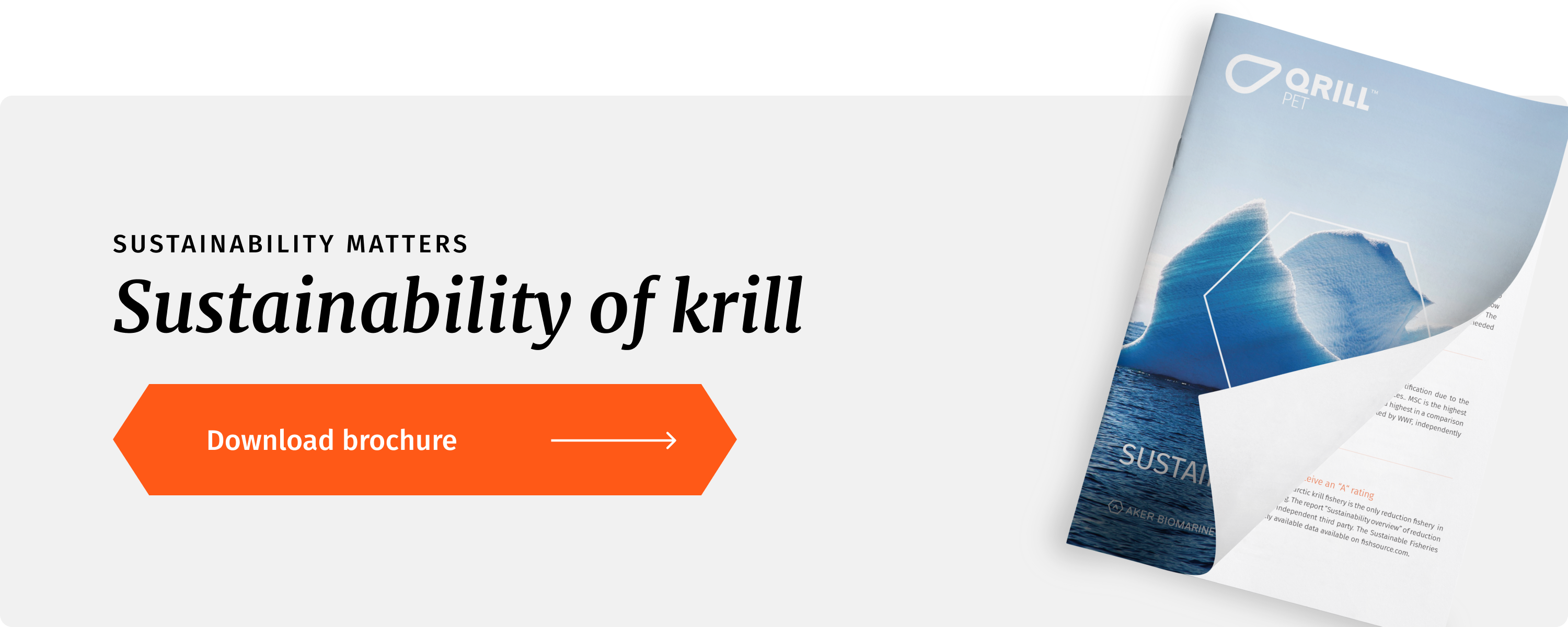The call for action on sustainability is growing all around the world. And so that means many people are considering how they can shift to a more sustainable consumption. But what about our pets and the food we give them?
Decarbonizing pet food
There is increasing emphasis on establishing more sustainable food systems, and the pet food industry is no exception. According to the EAT Foundation, studies show that if the pet food industry was a country - it would be 6th largest carbon emitter in the world!
Pet food brands need to walk their talk on sustainability, and increasingly so: in a documented way. Pet food brands can require their suppliers to provide Life Cycle Assessments (LCA) mapping the carbon footprint of the individual ingredients in their feed. In Aker BioMarine, we have recently updated the LCAs of all our product lines.
Providing a marine ingredient into pet food, our QRILL Pet meal benefits from a lower carbon profile than many land-based alternatives.
Responsibly sourced ingredients
Sustainability is also about responsible use of natural resources. For Aker BioMarine, sustainability has been a core to our business since the outset. We harvest krill in Antarctica and process this valuable resource into high quality products for humans and animal feed.
Antarctic krill makes up one of the world’s largest marine biomasses. At certain times of year, Antarctic krill swarms are so dense they can actually be seen from space!
Given the importance of krill as a keystone species in Antarctica, our commitment to ensure a healthy ecosystem for other animals that depend on krill as a primary food source has always been paramount. Before we deployed our first fishing net, we entered in a dialogue with different NGOs to take advice on fishing operations that would have as little impact as possible on the Antarctic ecosystem.
More on the sustainability of krill
The krill fishery is also monitored and regulated by the Commission for the Conservation of Antarctic Marine Living Resources, an organization committed to ensuring the protection of marine life in Antarctica. CCAMLR regulates the precautionary principle strictly in the harvesting area, with an annual quota of maximum 1 % of the local biomass. This is a relatively safe limit, as many other fisheries around the world are still considered sustainable at 10% annual catch.
CCAMLR uses a precautionary, eco-system based approach to prevent krill harvesting that will have a negative impact on the species itself and other species in the surrounding ecosystem. More than that, harvesting krill is restricted to a specific region called Area 48 in the Southern ocean, the ocean surround Antarctica.
Krill is the sustainable choice
Aker BioMarine’s QRILL Pet is the first krill ingredient for pets certified by the Marine Stewardship Council (MSC). This means that every company that has handled the product, from the fishery to the manufacturer, has been independently audited to ensure that the product is certified sustainable.
The health benefits of krill for pets
The use of sustainable pet food ingredients is crucial to ensure that the world’s oceans are healthy now and in the future. You can protect our oceans and their ecosystems by choosing marine ingredients for your pet food brand that are obtained from a sustainable fishery.
It’s never too late to make more sustainable choices. Choosing products like QRILL Pet that are sustainable will help ensure that we all take care of our planet, the oceans and the species living there.

